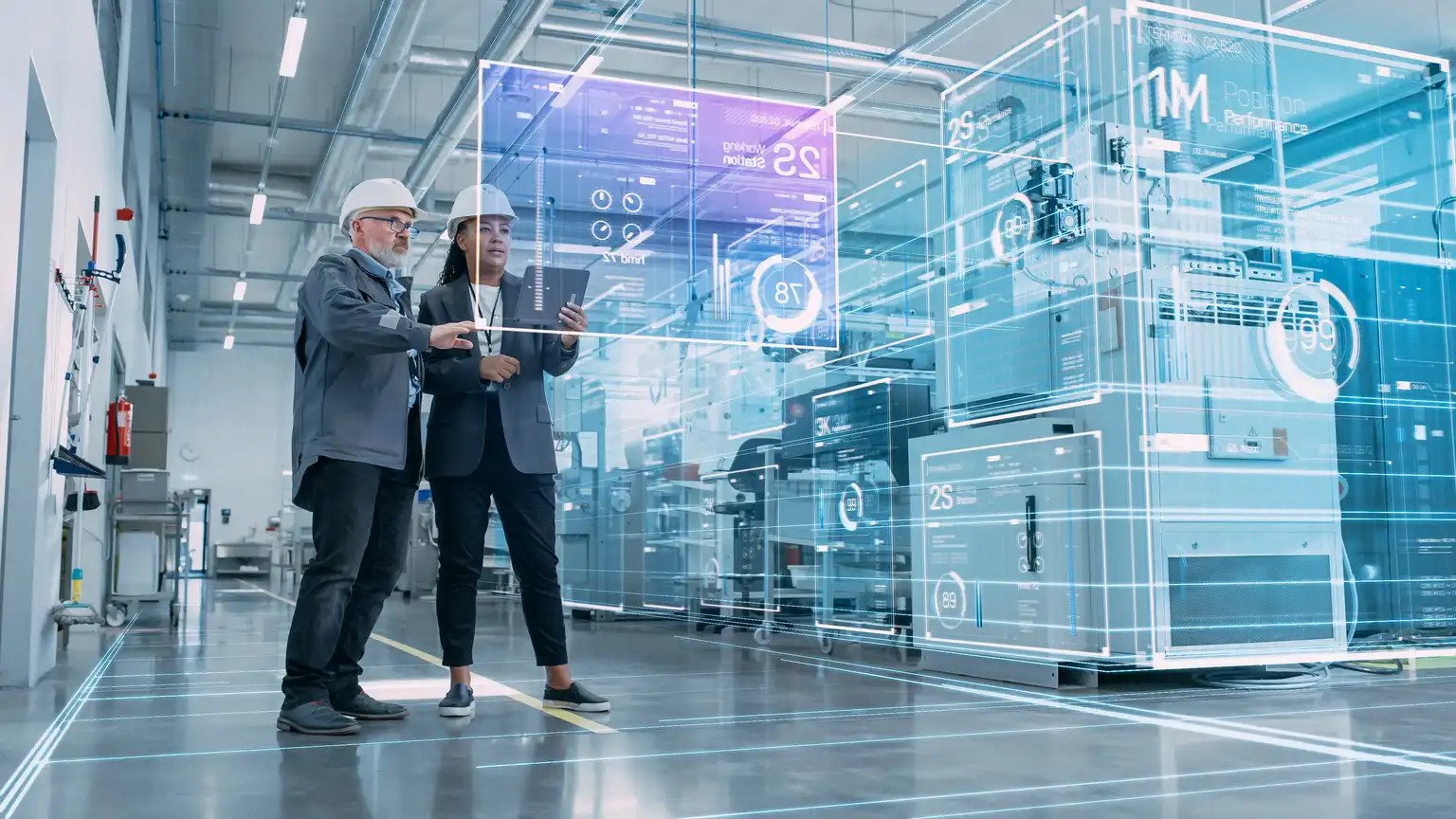The Future of Technology Innovations That Will Shape the Next Decade
As we stand at the brink of a new era, the role of technology in shaping our world is more critical than ever. Over the next decade, we will witness extraordinary breakthroughs that will redefine industries, alter the job market, improve healthcare, and transform how we live and interact. The coming years will not just be about faster devices or smarter machines; they will be about deep, systemic change in the way humanity coexists with technology.
This blog post explores the future of technology by looking at the most transformative innovations expected to lead us into 2035—and beyond. From artificial intelligence and quantum computing to biotechnology and climate tech, the technologies of tomorrow are already beginning to emerge today.
Artificial Intelligence (AI) and Machine Learning (ML) Moving Toward General Intelligence
AI has already made a deep impact in fields like automation, customer service, and data analysis. However, the next decade will see a dramatic evolution from narrow AI—designed for specific tasks—to more generalized, adaptive systems. These intelligent systems will not only follow commands but understand context, learn independently, and interact more naturally with humans.
In healthcare, AI will help design personalized treatment plans based on genetic profiles. In transportation, AI will power autonomous vehicles that reduce accidents and optimize traffic. In finance, AI will manage investments, detect fraud, and offer customer support with minimal human intervention. Perhaps most significantly, large language models (like ChatGPT) will continue evolving to become true digital collaborators—assisting in research, creativity, education, and business decision-making at a scale never seen before.
Quantum Computing: The Next Computing Revolution
Quantum computing is not just a faster version of traditional computing—it’s a complete paradigm shift. Based on the principles of quantum mechanics, quantum computers process data in fundamentally new ways, making them incredibly powerful for specific tasks like complex simulations, cryptography, and problem-solving in chemistry or physics.
By the 2030s, we expect quantum computing to be a critical tool in pharmaceutical development, enabling researchers to simulate how molecules interact on an atomic level. This could drastically reduce the time and cost it takes to bring life-saving drugs to market. It will also impact logistics, weather forecasting, and encryption, leading to stronger cybersecurity practices and more accurate data models.
While widespread commercial use is still in its infancy, investments from tech giants like IBM, Google, and startups such as IonQ and Rigetti are driving progress at a surprising pace.
The Internet of Things (IoT) and Smart Ecosystems
The next decade will see the maturation of IoT from scattered smart devices to fully integrated smart ecosystems. Homes, offices, cities, and factories will increasingly be populated with sensors and devices that communicate seamlessly with one another, optimizing operations and anticipating human needs.
In smart homes, devices will not only respond to voice commands but also anticipate behaviors. Your home will adjust lighting, temperature, and even grocery orders based on your preferences. In smart cities, IoT will manage traffic flow, energy usage, and public services to improve the quality of life for urban dwellers.
In industrial settings, IoT combined with AI will create smart factories—environments that are self-monitoring, predictive, and incredibly efficient. These innovations will reshape the global supply chain, manufacturing, and energy sectors in ways we’re just beginning to understand.
Biotechnology and Human Enhancement
Biotech is poised to be one of the most life-altering technologies of the next decade. Advances in CRISPR gene-editing tools, regenerative medicine, and synthetic biology are opening new doors to treating, and potentially curing, once-incurable diseases.
By 2035, we could see breakthroughs like lab-grown organs for transplants, personalized gene therapies for cancer, and even tools to slow or reverse aspects of aging. Brain-computer interfaces (BCIs) such as Elon Musk’s Neuralink are exploring ways to connect human cognition directly with digital systems—potentially allowing people to control devices with their thoughts, restore lost mobility, or enhance memory and learning capacity.
These innovations, while exciting, also raise profound ethical questions about access, equity, and the definition of what it means to be human. Societal dialogue and regulatory frameworks will be essential to ensure that biotech benefits all, not just a privileged few.
Renewable Energy and Climate Technology
Addressing climate change will be one of humanity’s greatest challenges in the next decade, and technology will be central to this fight. Renewable energy sources like solar, wind, and hydroelectric are becoming more efficient and affordable, enabling large-scale shifts away from fossil fuels.
Next-generation battery storage systems will allow for better management of energy flows, solving the problem of intermittent renewable supply. Meanwhile, smart grids powered by AI and IoT will balance energy distribution and consumption in real-time, minimizing waste and outages.
Climate tech also includes innovative solutions like carbon capture, plant-based materials, lab-grown meat, vertical farming, and even geoengineering techniques designed to reflect sunlight or alter weather patterns. As governments, startups, and large corporations invest in sustainability, we are likely to see a technology-led green revolution by 2035.
Space Exploration and Commercialization
Once the exclusive domain of governments, space exploration is now being redefined by private companies such as SpaceX, Blue Origin, and Rocket Lab. In the coming decade, these ventures aim to establish permanent human presence on the Moon, set the stage for Mars colonization, and build a thriving space economy.
Satellites will continue to play a key role in communication, navigation, climate monitoring, and internet access for remote regions. Additionally, the idea of space mining—extracting rare minerals from asteroids—though still conceptual, is being actively researched as a solution to resource scarcity on Earth.
The commercialization of space could redefine logistics, enable new scientific discoveries, and even create new economic opportunities for developing countries.
6G and the Hyperconnected World
While 5G is still being rolled out, researchers are already developing 6G technology, which will likely arrive in the early 2030s. 6G promises ultra-fast data speeds, nearly zero latency, and the ability to connect trillions of devices worldwide.
This hyperconnectivity will enable immersive experiences like holographic communication, real-time global collaboration, and massive IoT networks across entire cities. With 6G, remote surgery, high-definition VR meetings, autonomous vehicle communication, and digital twins of real-world environments will become commonplace.
Such connectivity will be the backbone of the next wave of industrial and social innovation.
Robotics and Automation in Daily Life
Robots are evolving from industrial machines to helpful companions in daily life. In the next decade, robots will assist in elder care, home maintenance, education, and hospitality. Imagine robots that can cook, clean, monitor your health, or tutor your child.
On the industrial front, robotic automation will increase production efficiency and worker safety while reshaping the labor market. Collaborative robots (cobots) will work alongside humans, augmenting their capabilities rather than replacing them entirely.
This shift will require reskilling of the workforce and a broader societal conversation about the future of human labor.
Immersive Technologies AR VR and the Metaverse
Augmented Reality (AR) and Virtual Reality (VR) are merging physical and digital worlds to create entirely new experiences in gaming, social interaction, education, and remote work. With tech giants like Apple, Meta, and Microsoft investing heavily in the metaverse, the next decade could witness a fully immersive digital layer over our real lives.
Education will benefit greatly, with virtual classrooms and interactive 3D environments making learning more engaging and accessible. In business, remote teams can meet in virtual offices that replicate real-world interactions. Retail will move beyond screens to allow customers to virtually try on clothes or test products.
The metaverse will open up opportunities for creativity, commerce, and collaboration—but also challenges related to privacy, identity, and mental health.
Digital Identity Privacy and Cybersecurity
As more of our lives move online, securing digital identities becomes critical. Technologies like decentralized digital IDs, zero-trust architecture, and AI-driven threat detection will be key to protecting personal data and maintaining trust in digital systems.
Biometrics, such as facial recognition, iris scans, and voice patterns, will be used for authentication. However, these systems come with concerns about surveillance and misuse. Balancing convenience and privacy will be one of the defining issues of the next decade.
Cybersecurity will become an integral part of national security strategies, business planning, and personal digital hygiene.
Conclusion
The next decade will be defined by unprecedented technological growth—growth that holds immense potential to improve lives, solve complex global problems, and unlock new levels of human creativity. But with this power comes responsibility. Ethical concerns, equitable access, and sustainability must be central to how we design, adopt, and govern new technologies.
Innovation must serve people. It should close gaps, not widen them. It should empower rather than displace. As individuals, organizations, and societies, we must stay informed, adaptable, and inclusive in shaping a tech-driven future that benefits all.
The future is not something we await—it is something we are building every day. And with the right vision, values, and collaboration, technology can be the tool that helps us build a smarter, safer, and more compassionate world.



